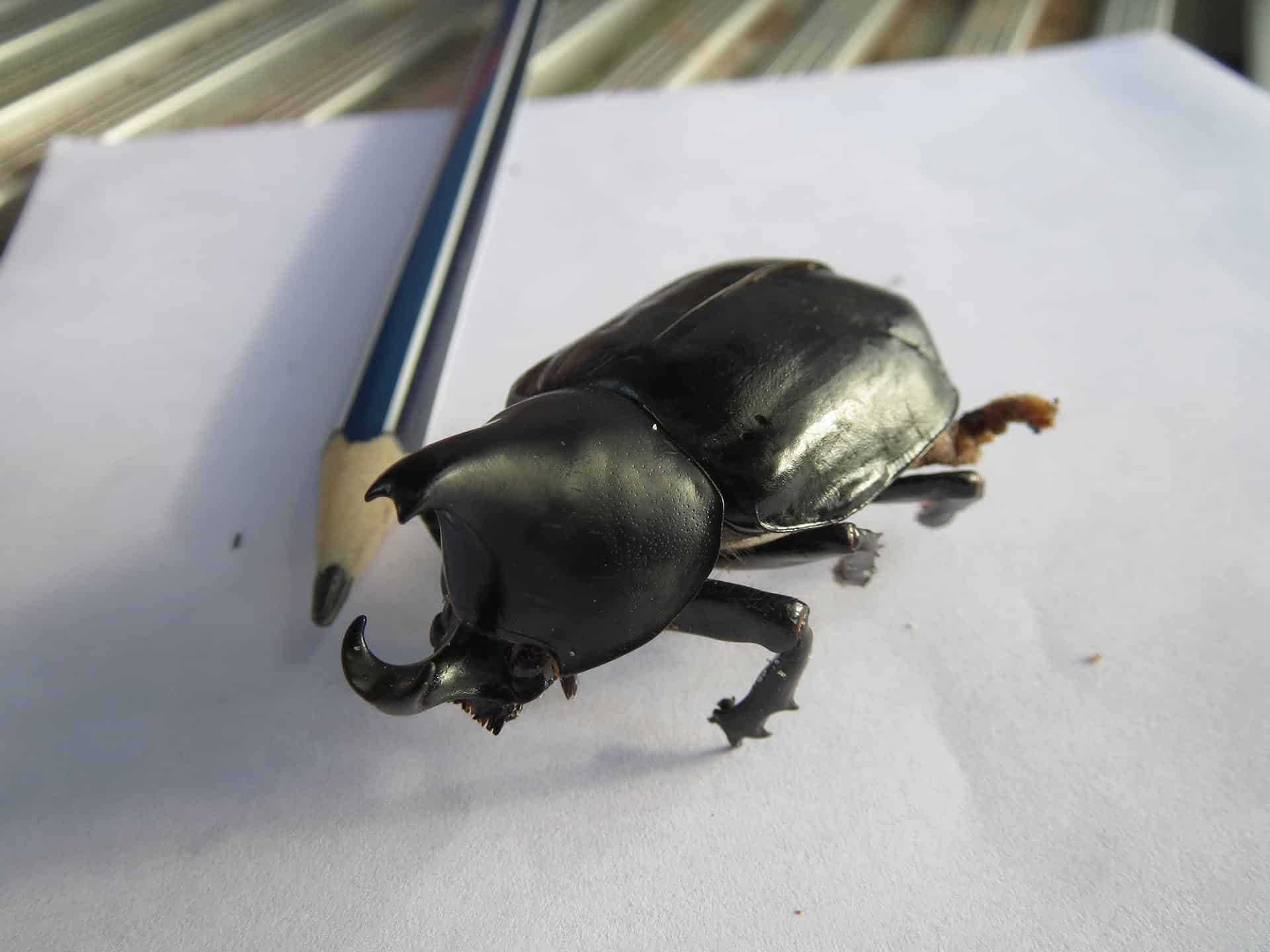The family scarabaedae has the largest beetles, some growing up to 150 mm.
Male beetles of this species possess two “horns”. One horn is on top of the head curving downwards and the lower horn comes from the thorax and curves upwards, almost meeting. Fortunately, they cannot bite or sting. The “horns” are solely for fighting other rhinoceros beetles.
The females do not have the horns, but are otherwise very similar to the male. They are both black.
When threatened the beetles rub their bodies against their wing casings, producing a hissing noise to discourage predators.
The larvae are also large (70 mm), and are translucent white with a red tinge and have a black head. They are seen in a semi curled ‘C’ position.
Adult size: up to 60 mm



